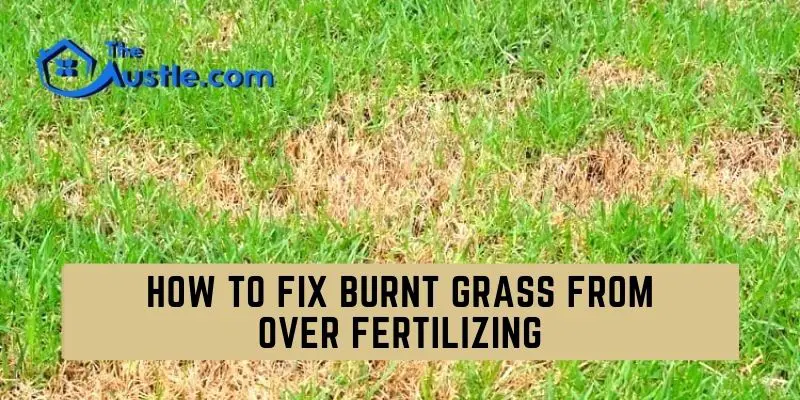Every homeowner’s dream is a lush, verdant lawn that adds curb appeal and enhances outdoor living spaces. However, an over-fertilized lawn can quickly turn this dream into a nightmare. Excess fertilizer disrupts the delicate balance of nutrients in the soil, damaging the grass and creating a host of undesirable conditions. If you find yourself facing an over-fertilized lawn, don’t despair. This comprehensive guide will provide you with all the information and step-by-step instructions you need to restore your lawn to its former glory.

Image: www.pinterest.com
Understanding the Symptoms of Over-Fertilization
Over-fertilizing your lawn can lead to several telltale symptoms, including:
- Rapid, lush growth: Initially, over-fertilized grass may appear lush and green, but this growth is unsustainable.
- Bright yellow or brown patches: Excess nitrogen can burn the grass, causing these unsightly patches.
- Thinning or weakened grass: Excess fertilizer can stunt root growth, making the grass more susceptible to disease and insects.
- Increased weed growth: Excess fertilizer creates an ideal environment for weeds, as they thrive on the abundant nutrients.
- Thatch buildup: Over-fertilizing promotes the growth of thatch, a thick layer of dead grass clippings and organic matter that can suffocate the grass.

Image: theaustle.com
How To Fix Over Fertilized Lawn
Steps to Fix an Over-Fertilized Lawn
1. Identify the Cause and Prevent Further Damage
Determining the source of over-fertilization is crucial. Common causes include using too much fertilizer or applying it too frequently. Once you’ve identified the problem, discontinue fertilizing your lawn immediately.
2. Increase Watering Frequency and Volume
Thoroughly watering your lawn helps leach excess fertilizer salts from the soil. Water deeply and frequently until the water penetrates several inches into the ground.
3. Aeration and De-Thatching
Aeration helps improve drainage and allows oxygen and water to reach the roots. De-thatching removes the thick layer of dead grass clippings that can prevent water and nutrients from reaching the soil.
4. Overseeding and Top-dressing
Damaged grass may need to be reseeded. After aerating and de-thatching, sow new grass seeds and top-dress the lawn with a thin layer of compost to provide essential nutrients.
5. Soil Testing and Nutrient Balancing
Conduct a soil test to determine the nutrient levels in the soil. This will help you identify any imbalances that may be contributing to the over-fertilization problem.
6. Promote Microbial Activity
Beneficial soil microorganisms help break down organic matter and improve nutrient availability. Encourage microbial activity by applying organic matter, such as compost or manure, to the lawn.
7. Patience and Maintenance
Restoring an over-fertilized lawn takes time and patience. Regular mowing, watering, and proper maintenance practices will encourage healthy growth.
Conclusion
An over-fertilized lawn can be a discouraging sight, but it’s definitely not a lost cause. By following these steps and implementing proper lawn care practices, you can restore your lawn to its former glory. Remember, prevention is always better than cure, so use fertilizer wisely and follow recommended application rates to avoid future problems.